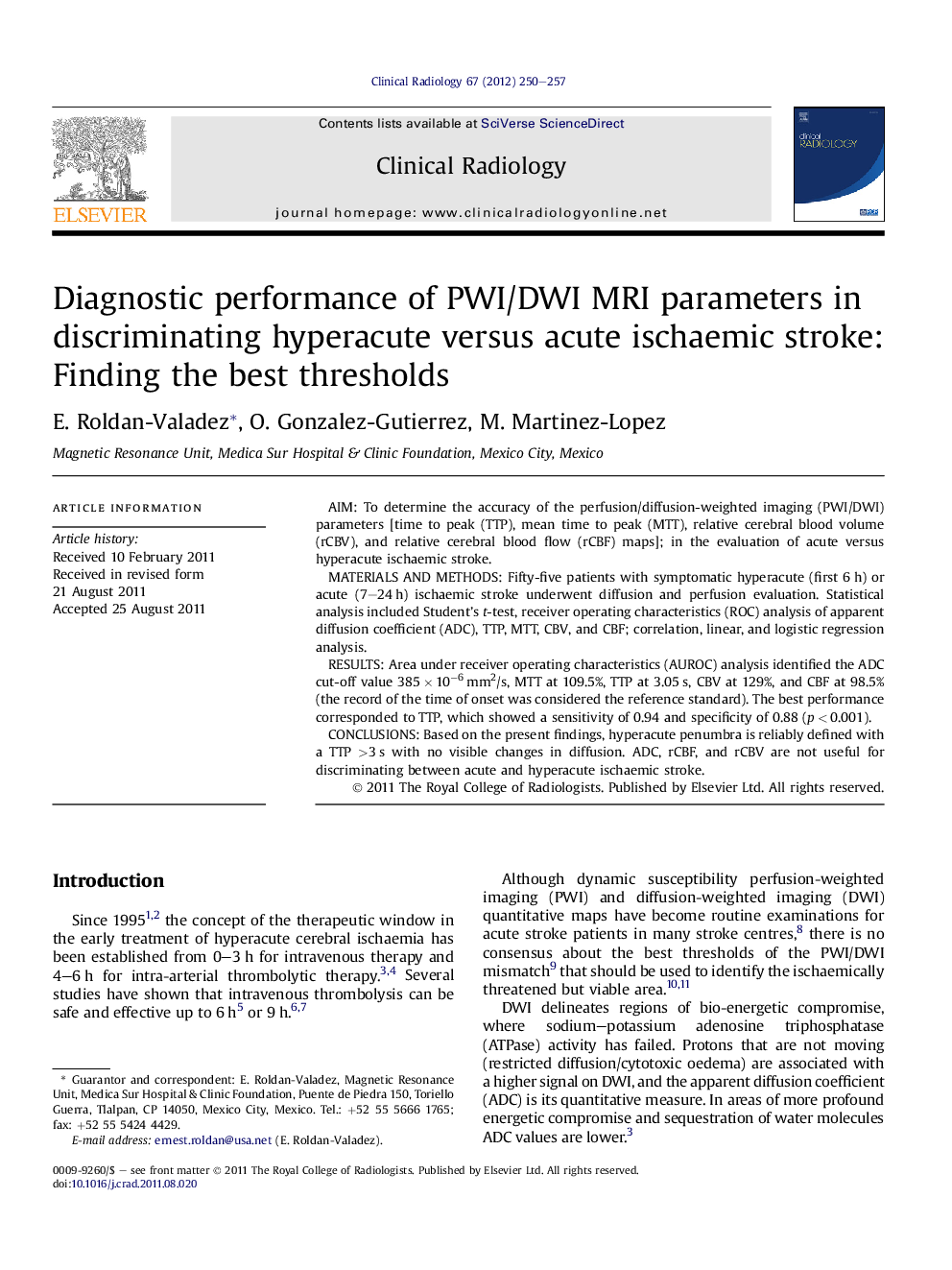| Article ID | Journal | Published Year | Pages | File Type |
|---|---|---|---|---|
| 3981689 | Clinical Radiology | 2012 | 8 Pages |
AimTo determine the accuracy of the perfusion/diffusion-weighted imaging (PWI/DWI) parameters [time to peak (TTP), mean time to peak (MTT), relative cerebral blood volume (rCBV), and relative cerebral blood flow (rCBF) maps]; in the evaluation of acute versus hyperacute ischaemic stroke.Materials and methodsFifty-five patients with symptomatic hyperacute (first 6 h) or acute (7–24 h) ischaemic stroke underwent diffusion and perfusion evaluation. Statistical analysis included Student’s t-test, receiver operating characteristics (ROC) analysis of apparent diffusion coefficient (ADC), TTP, MTT, CBV, and CBF; correlation, linear, and logistic regression analysis.ResultsArea under receiver operating characteristics (AUROC) analysis identified the ADC cut-off value 385 × 10−6 mm2/s, MTT at 109.5%, TTP at 3.05 s, CBV at 129%, and CBF at 98.5% (the record of the time of onset was considered the reference standard). The best performance corresponded to TTP, which showed a sensitivity of 0.94 and specificity of 0.88 (p < 0.001).ConclusionsBased on the present findings, hyperacute penumbra is reliably defined with a TTP >3 s with no visible changes in diffusion. ADC, rCBF, and rCBV are not useful for discriminating between acute and hyperacute ischaemic stroke.
